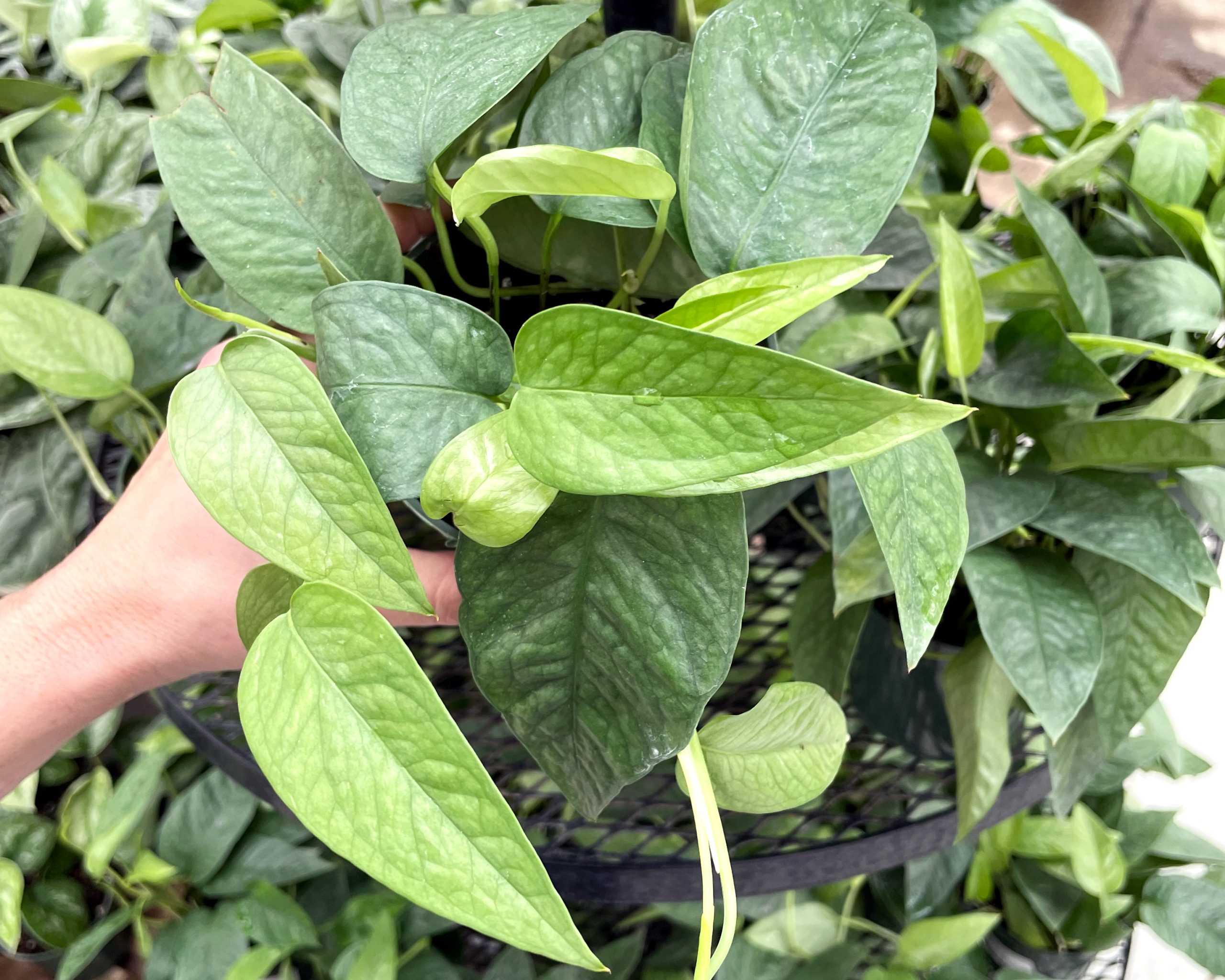How can you tell if you are overwatering or underwatering? These two separate problems can look the same, but with a closer look, you’ll see the difference. Yellowing leaves are usually the first sign of under or overwatering, but there are more subtle clues.
Signs of Underwatering: Leaves cease to grow Lower leaves yellow and curl Leaves or flowers fall before they are mature Leaves may have a translucent quality Leaves will develop brown, dry edges.
Signs of Overwatering Leaves cease to grow Leaves begin to turn yellow Leaves, young and old, fall off Leaves develop brown spots but they are soft, not crispy.
Is my plant getting enough light or too much? Look for more than one of these conditions happening at the same time. If the lower leaves on your plant turn yellow and fall off in conjunction with the plant looking stretched or putting out smaller new leaves, then you have a lighting issue rather than a watering issue.
Signs of Not enough light: Plant looks spindly and stretches outward toward the light that is available Lower leaves yellow and fall off. New leaves come out but are smaller. Plant stops growing Flowers don’t bloom On variegated plants, new leaves are all green.
Signs of too much light: Plant wilts even though watering is sufficient Plant gets “sunburn” indicated by scorching on leaves Leaves look faded.
How do I know when to fertilize my plant?
Signs of your plant may need feeding: The plant has an overall unhealthy look. The leaves begin to look pale and drop off. New growth is weak including the stem.
Signs you’ve been giving plants too much food: A white crust on the top of the plant soil may be the most obvious sign. Leaves will look scorched with brown spots while wilting will also occur. Too much fertilizer burns the plant.
Tips on feeding: Select plant food meant for indoor plants. Some plants need specialized food such as orchids or African violets. Never follow product instructions when feeding an indoor plant. Use half of the recommended amount. Never feed a newly re-potted plant. Give the plant some time to adjust to its new soil. Never feed a newly purchased plant. Give the plant time to adjust to its surroundings. The soil it was planted in will still have fertilizer in it. Wait a month or more. If you see insects on your plant, fertilizer is not the answer. Diagnosis should come first before feeding.
Will my plants attract insects or diseases? All plants, trees, shrubs, flowers, lawn grass, are generally much more resistant to attacks when they are healthy. This is also true of indoor plants. Poorly maintained plants have a far greater chance of developing problems. All indoor plants should be checked for insects and diseases once a month.
How to identify insects on indoor plants:
Spider mites The size of a pinhead, spider mites can be either brown or almost colorless. They collect themselves on the undersides of leaves where they leave light dots or stippling from feeding. If the population is large, the webbing can be seen, leaving no question about which insect is present. A plant with spider mites will show leaves that turn yellow, dry up and fall off.
Aphids are one of the least damaging pests to plants as long as the infestation is not very heavy. If aphid numbers get big, the plant will experience wilting with curling and yellowing leaves. Aphids come in many colors and leave a sticky secretion on the plant leaves and stems.
Mealybugs are soft and fuzzy white bugs and are easy to identify. Look for cottony spots on the leaves and stems.
Fungus gnats are familiar to anyone who has kept bananas or citrus around the house too long. They look like tiny weak mosquitos just hovering around the plant. They’re a sign of too much moisture and unlike other pests are more attracted to the soil (where their eggs hatch) than the plant. For this reason, they can damage plant roots.
Scale can be hard or soft-bodied insects that cling to the undersides of leaves and stems. At 1/8” to 1/2” long, they are more visible than many plant insects but are easy to miss as they don’t move. Hard scale doesn’t leave a secretion while soft scale does.
Thrips can be black or pale yellow, but in either case are long, thin winged insects that appear to be tiny threads on the plant. They have the ability to fly but rarely do. Thrip damage to plants causes a splotchy, silvery and pale appearance with scarring. Plants may begin to deform.
Whiteflies are similar in appearance to tiny, white moths. They tend to collect on the undersides of leaves but will fly around when the plant is moved. Plants with whiteflies will show yellowing leaves and weaken. A sticky secretion will be left on the leaves. Whiteflies may look like translucent scales in immature stages and likely be undetectable.
Other considerations for plant health: Low-E glass in windows is very common and will not affect your plant’s health. Low-E glass acts to change temperature but does very little to affect a change in the visible spectrum of light which plants use. Artificial plant lights aren’t great for all plants all the time. Some plants that we keep indoors need a dormancy period. Keeping a plant that needs dormancy under lights all winter may be detrimental. Find out what your plant needs in the winter months before assuming it will want light. Before setting your plants on humidity trays, get specific information on the type of plants you have. For instance, putting succulents on humidity trays will provide too much overall moisture and rot them.

